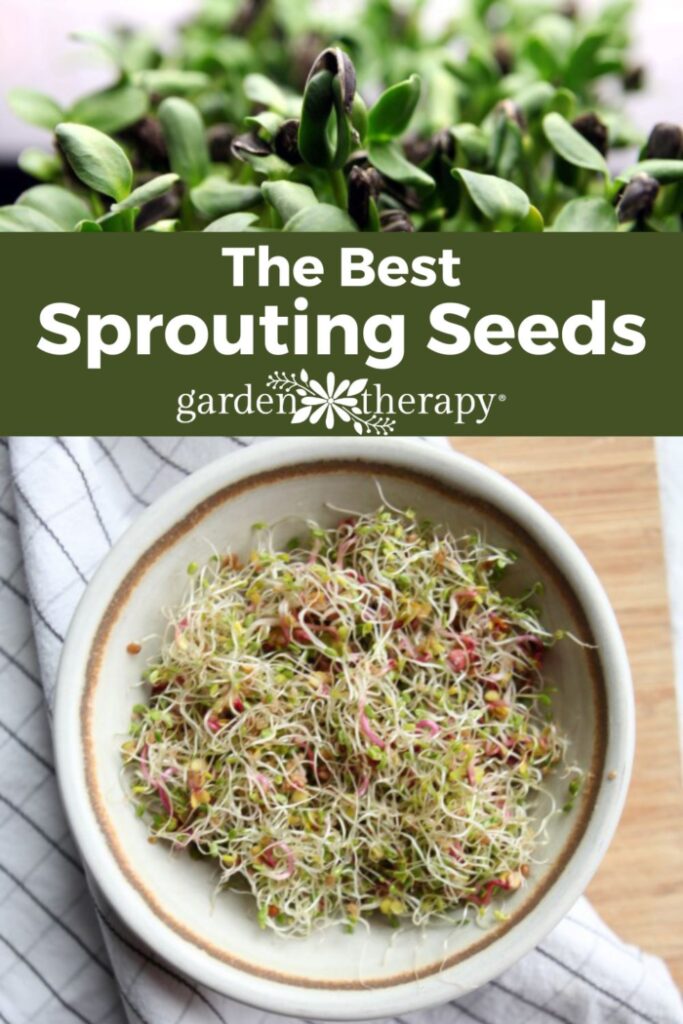Wondering what the best sprouts to eat are? Look no further! This post will show you what the best sprouts are, plus how to grow them. Growing sprouts is simple, and provides you with a nutrition-packed crunch any time of the year.
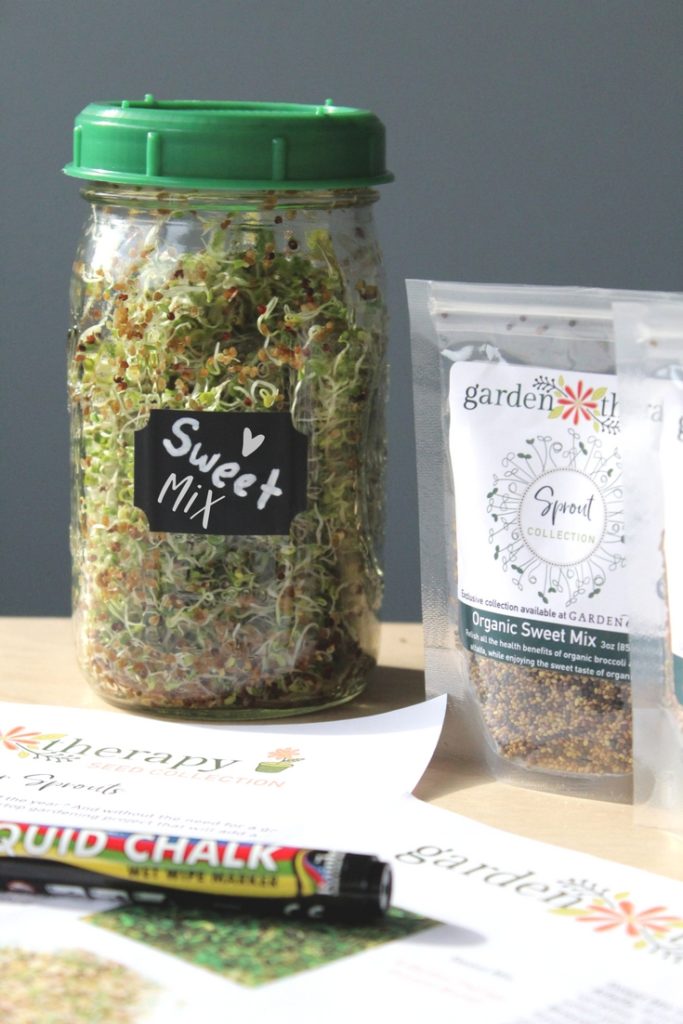
Growing your own sprouts is one of the easiest and most accessible ways to grow food at home because it requires very little space, can be done indoors at any time of year, and is super easy to do!
The only thing that can get a bit confusing is when you buy your seeds and find yourself faced with a shelf full of different varieties. Which should you choose?
In this post, you’ll find a list of some of the best sprouts to grow from seed and what they taste like. This way, you can pick the right sprouts for your preferences. You may also want to pick a few and mix them together—you can create all sorts of delicious flavour combinations!
Wondering how to grow sprouts? Read this article for my how-tos. And then come on back here to pick your favourite ones to grow.
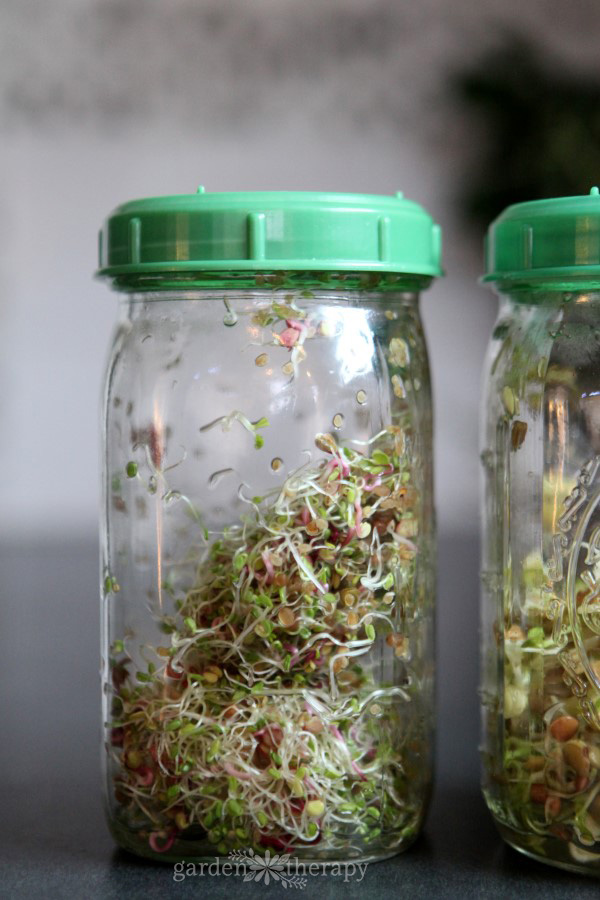

The Best Sprouts to Eat and Grow
Alfalfa
Alfalfa sprouts are one of the most common varieties, probably because the taste goes with everything! They are small, crunchy sprouts with a mild taste. Add these sprouts to any dish to add a little crunch and a lot of nutrients.
Beet
Beet sprouts have colourful stems in dark red or magenta and bright green leaves, so if you want to add a pop of pretty colour to a dish, these are the right option for you. They taste slightly earthy and very sweet.
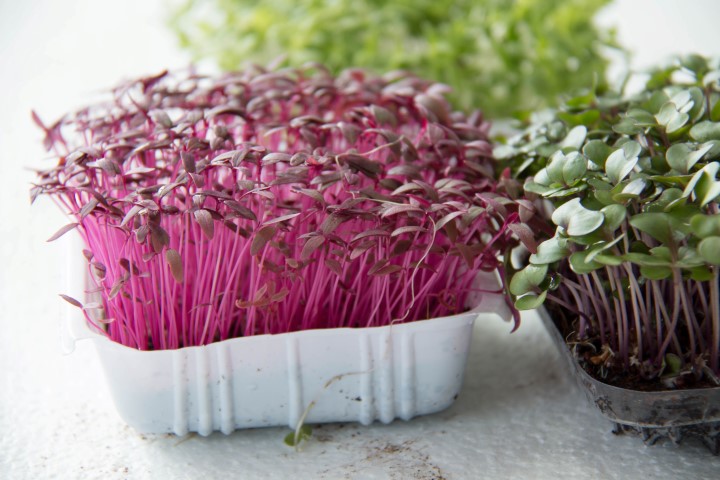

Broccoli
Broccoli produces thick, hefty sprouts that have a nutty, spicy flavour (a bit like radish). They don’t actually taste much like broccoli, but they are a delicious addition to anything that could use a little spice.
They are also particularly high in antioxidants, so these are a good choice if you want to boost your health.
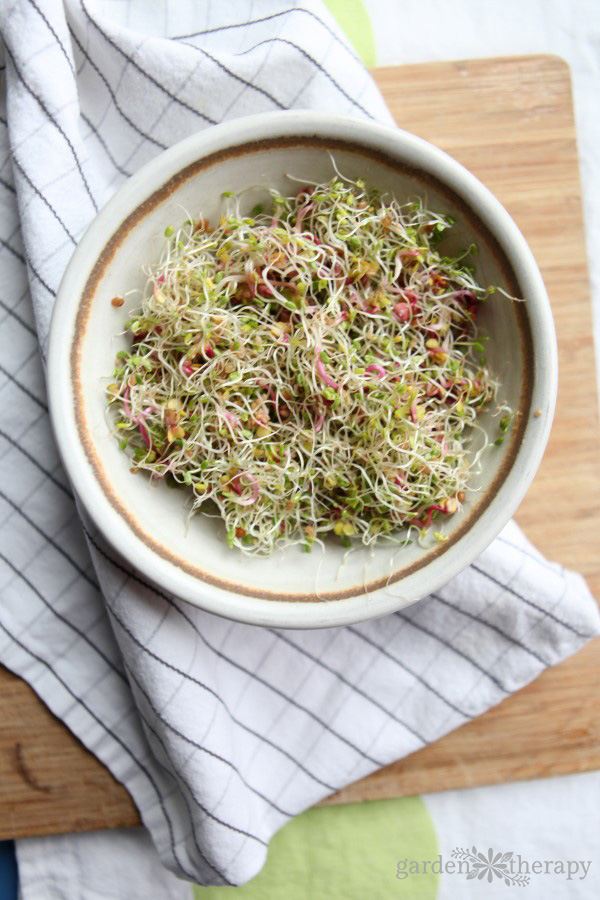

Fenugreek
Fenugreek has a bitter taste that adds complexity to dishes when mixed with other flavors (consider using it in a mix), but is usually not eaten on its own. This can help to relieve an upset stomach, so this is a good choice for those with sensitive tummies.
Green Pea
Green pea sprouts are crunchy with a fresh, sweet taste reminiscent of snow peas. They are mild and go well with most other flavours. These are many people’s go-to sandwich sprouts! I like to grow them in combination with the mung bean variety mentioned below as they have the same growing time and complementary flavours.
Lentil
Lentil sprouts come in various colours, making them an attractive addition to a dish that needs a little colour contrast. They have a great, crunchy texture and a rich, nutty flavour.
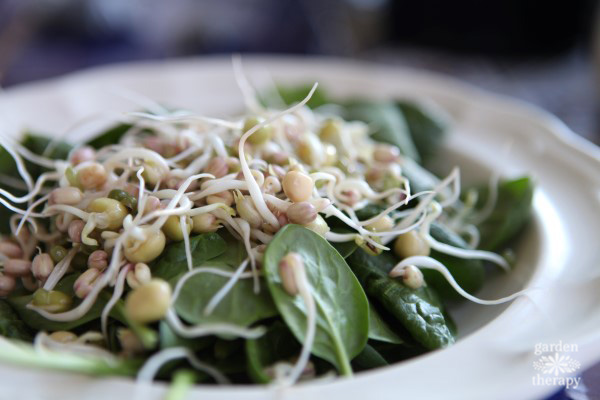

Mung Bean
Mung bean sprouts are thick, juicy sprouts with white stems and a very mild taste. Their crunchy texture and tendency to take on the flavour of whatever sauce or seasoning are added to them, which makes this tasty treat a great addition to a stir-fry.
Mustard
Mustard sprouts have an earthy taste and a spicy kick, kind of like horseradish. A perfect option for the spice lover!
Radish
Radish sprouts are very slender, with red-tipped leaves. They look lovely as a garnish. They taste similar to mature radishes but with less spice.
Red Clover
Red clover’s dark green sprouts have a mild, earthy taste and a very crunchy texture. They go well with most other flavours, so pile them onto all your favourite sandwiches, salads, wraps, and bowls.
Spelt
Sprouting spelt results in a nutritious, chewy grain with a mildly sweet taste. If you want to use them in a surprising way, these can be added to your morning granola, raw bread recipes, and even baked into cookies.
Sunflower
Sunflower sprouts have thick, juicy leaves with a deep, nutty flavour that is scrumptious. These are delicious in the usual dishes—salads, sandwiches, bowls, etc.—but their sweet flavour also makes them a welcome way to pack some more nutrients into a fruit smoothie. Learn more about these flavourful sprouts here.
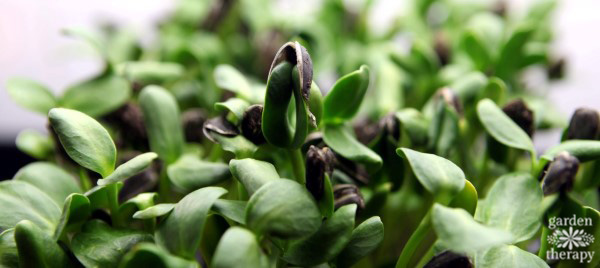

FAQ About Growing Sprouts
Beet sprouts are super tasty when you can get them to sprout. They do take longer than other seeds to sprout, so have patience. If you can’t get them to sprout, you can try growing them as microgreens instead.
I only recommend buying seeds that are for sprouting purposes. Other seeds could be treated. Sprouting seeds must be prepared in facilities approved for food-grade products.
If you’re struggling to buy seeds, I’ve linked them throughout the article.
Microgreens are grown in soil, while sprouts are grown without soil by germinating in water. I like to make my sprouts in a Mason jar. Both are great options for nutritious greens; it just comes down to personal preference.
I hope this list has your mouth watering as much as it does mine! Which variety (or varieties!) will you grow first?
More Small-Space Gardening Ideas


